General FAQ
General FAQ
Introduction
- The term paint is generally used to describe a white or coloured liquid which, when applied to a wooden or metal surface, dries to form an integral film over the surface. Paint is used externally with the prime intention of protecting the substrate and secondly, to decorate and enhance the appearance of the article or structure. When used inside buildings the reverse usually applies and here the main intention is to decorate.
- Whilst the word paint is commonly used to describe any liquid coating sold in a tin or drum it must be appreciated that there is a very large variety of paints produced – each carefully designed and formulated to serve a specific need and to perform a specific function.
The Composition of Paint
All paints and products made for the surface coating industry broadly consist of three parts
- Pigments and extenders
- Vehicle or medium
- Metal Protective Coatings
plus other miscellaneous raw materials included for special purpose such as driers, anti-settling agents, thickeners and fungicides.
1. Pigments and Extenders
- Pigments are white or coloured powders, consisting of inorganic and organic chemical compounds, obtained either naturally (from the earth) or synthetically (from chemical factories), and they perform a variety of functions depending for what purpose they are used. All pigments provide opacity and colour and by careful blending, an extremely wide range of colour can be obtained. Certain neutral pigments impart durability against weather and other chemically active pigment form water resistant, and hence corrosion resistant when incorporated in the correct medium or binder. Commonly used pigments are titanium dioxide (white) oxides or iron (red, yellow and black) lead and zinc chromes (yellow, orange and red) carbon black and a variety of organic chemicals which provide blues, greens, reds and yellows.
- Extenders are generally inert inorganic minerals in fine powder form such as clays, chalk and other natural deposits which, when incorporated in paint become transparent due to their low refractive power. Hence, the name ‘extender’ or ‘filler’ as they are sometimes known, as their main purpose is to extend the contents of the paint to produce ‘body’, adjust the gloss of the finish (the more extender the lower the gloss) and, generally, to provide a useful cheap ingredient invaluable to the paint chemist. Commonly used mineral extenders are China Clay (Aluminium Silicate), Calcium Carbonate and Barytes (Barium Sulphate).
2. Vehicle or Medium
- Commonly known as the binder this part of paint is a liquid constituent, serving to bind together the pigments and extenders, which after application dries and solidifies by one or all of three methods – evaporation, oxidation and polymerisation (chemical reaction).
- In oleo-resinous paints such as enamels, primers, etc. the binder can consist of a wide variety of raw materials such as Linseed Oil, Varnishes made from vegetable oils with either natural resins (resin and copals from trees and fossils) or, now more commonly, synthetic resins (phenolic resins, ester gums and alkyds – all of which are complex chemical derivatives).
- In water based products such as emulsion paints, the binder can consist of an emulsion of oil in water (glue solution) or a dispersion in water of a synthetic resin such as styrene butadiene, acrylic or vinyl resins. There are all polymer resin and products of complex organic chemical reactions.
3. Metal Protective Coatings
- The name is self explanatory and the purpose of the solvent present in a paint formulation is to dissolve and thin the binder, and therefore the paint, to render the consistency suitable for application by whatever means is chosen – either brush, roller, spray or even dipping.
- In oil or varnish paints white spirit is by far the most common solvent but in more specialized products many other types of thinners and diluents are used including alcohols, ketones, acetates and a wide range of aromatic compounds. Another extremely well known paint thinner is, of course, water which is used in the manufacture of emulsion paints.
- Evaporation of the solvent from the applied paint film is the first stage in the drying process when the surface becomes sticky, rather than wet, and the process then proceeds chemically until the coat of paint is hard.
Product Types
- Building and Decorative Paints
- Industrial Finishes
- Metal Protective Coatings
1. Building and Decorative Paints
- This is the largest group of products and used for the protection and decoration of all classes of buildings. Materials such as wood and metal primers, undercoating and enamel finishes are used on doors and windows whilst emulsion paints in a variety of qualities and prices are used for walls and ceilings.
2. Industrial Finishes
- Virtually, all articles fabricated in industry are painted before they find their way to the consumer and the paints required in this field are usually tailor-made to suit individual requirements of gloss, hardness, flexibility, impact resistance, chemical resistance and colour. Manufactured articles such as refrigerators, air conditions, light fittings, etc are coated with stoving finishes which have to be baked at high temperatures to cure the film to produce the insoluble mark proof surface associated with such articles. Other types of stoving finishes are used on steel furniture, office equipment, metal containers and a vast miscellany of other goods.
- Other surface coatings which may be considered under the heading of industrial finishes are air drying materials such as quick drying machinery and tractor enamel; cellulose lacquers for wooden furniture and other articles, pencils for example, where the extremely rapid drying time is advantageous; hammer finishes, both air dying and stoving, commonly used on electrical switchgear, and many other specialized items.
3. Metal Protective Coatings
- The corrosion of metal is the biggest problem facing the paint industry and constant research is being carried out to find the most suitable method of protecting metal from the effects of the atmosphere, moisture and chemical attack. The application of anti-corrosive primers and weather resistant finishes to metal structures such as bridges, pylons, etc., serve to protect the metal and, therefore, increase the life span of the structure by preventing damage and possible collapse by rusting. Red Lead, Metallic Lead, Calcium Plumbate and Zinc Chromate are among the most important pigments used in metal primers and lamellar finishes such as aluminium or micaceous iron oxide paints are extensively used as weather resistant protective top coats.
- Apart from the above mentioned types of surface coatings, many other outlets exist for specialized products. Ship paints, including anti-fouling composition, car paints, both air drying and stoving, insulating varnishes, petrol resisting coatings, road marking paints, etc.
Manufacture
The basic principle of making paint is to mix together the raw materials chosen for a specific type of product to produce a homogenous, smooth liquid and in order to produce paints of a sufficiently high standard to meet modern day requirements it is necessary to utilize a wide variety of manufacturing machinery. These include high speed dispersion mills, ball mills and roller mills which are necessary to disperse, or grind, the pigments into the binder so as to produce materials without any lumps or undispersed particles which could detract from both the appearance and performance of the finished product. The concentrated bases, having been produced, are then blended with other liquid constituents, thinned and tinted to the required shade.
Conclusion
From these notes it will be realized that paint technology and manufacture is a very involved procedure covering a wide field of technical and chemical knowledge. It will now be obvious that one paint could not possible serve every purpose and unless manufacturers’ instructions and recommendations are followed the many special properties and advantages built into a tin of paint will be lost and the final result unsatisfactory. To illustrate this point, remember that
- Primer must be used on wood or metal as this provides basic protection and adhesion both chemically and physically. The primer must itself be protected as it may not be weather resistant – therefore, use:
- Undercoating to provide extra thickness to the coating scheme, give a good key to the finish and form a suitable opaque coloured base. Undercoating is not weather resisting and must be covered by:
- Enamel or Gloss Finish in the required shade which is weather resistant, hard and attractive in appearance.
Each of the above paints serves a different purpose and none can be used to replace another. Similar sets of applications rules apply to other types of paints and the manufacturer is the best person to advise upon correct usage. True Colors Painting Solutions Sdn Bhd are always at your disposal to discuss your painting problems and can offer a full range of decorative and industrial finishes to meet your requirements.
Efflorescene and Alkaline Attack
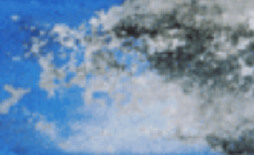
Efflorescence Attack
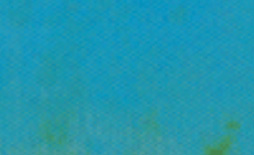
Alkaline Attack
Both due to water which contains soluble salts from cement. When penetrated through the paint film and evaporated, salts residue is left behind.
To avoid:
- To make sure new cementatious substrate had been cured for at least one month before application.
- To make sure the substrate is dry during application.
- To make sure there is no leakage from roof or hidden piping (to seal any possible water seepage) before application.
- To prime with good quality water based or solvent based primer before application for the top coats. Do not dilute the primer if possible or slight dilution (according to manufacturer instruction) only to ease handling during application.
- Old affected substrates need to be washed to remove the salts. Let it dry and paint with quality primer (water based or solvent based). Critical areas might need to neutralize with mild acid, wash it with running water, before primer application.
Hiding Power
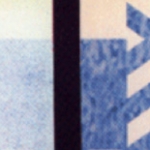
Poor hiding power means inability for paint to cover substrate for certain paint film thickness.
Due To
- Low quality paint being used.
- Low quality tools/ wrong roller (to choose a right tool, see “tools for painting”).
- Higher spread rate than recommended during paint application (too much dilution or too thin coating).
- Paint used which is very much lighter in colour than the substrate.
- Colour by nature. For example, bright organic pigment will giver lower hiding than the inorganic pigment (oxide).
Recommendation
- If substrate is significantly darker and bright colour top coats must be used, prime the substrate before application of top coats.
- Use a better quality paints for hiding and flow.
- Higher spread rate than recommended during paint application (too much dilution or too thin coating).
- The use of correct tool.
Overlapping Duration Application
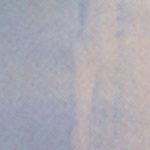
Dry paint film overlapping (unevenness) during application. Generally will result in differences of gloss level and the hiding power.
Due To
- The wall or substrate is too absorbance.
- Failure in maintaining wet edge during application.
- Two different paint dilution may eventually cause the paint film thickness to differ.
Recommendation
- Apply primer/sealer before top coats application if the wall or substrate is too absorbance. (see “basic paint methods”).
- Maintain wet edge when painting, brush from wet to dry rather than vice versa.
- Minimize painting area and plan for interruptions at a natural break.
Wrinkling of Paint Film
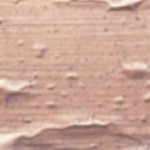
Due To
- Paint film too thick.
- Painting on a very hot surface.
- Subsequent coat applied when previous coat not dried.
- Substrate surface contamination.
Recommendation
- Apply paint according to manufacturer recommended spreading rate. Painting two coats to get the dry film thickness is better than applying one coat to get the required thickness.
- When applying paint during extremely hot, cool or damp weather, allow extra time for the paint to dry completely before subsequent coat.
- To encounter this problem, wrinkled surface must be scrapped and sanded before repainting to avoid adhesion problem.
Flaking

Paint film appears as hairline cracks initially and flaking occurs in its later stages.
Due To
- Overspreading or over thinning the paint.
- Low quality paint that has inadequate adhesion and flexibility.
- Poor surface preparation.
- Painting during very cool and windy weather which will cause the water based paint to dry too fast.
Recommendation
- Use of quality primer and top coat.
- Remove loose and flaking paint before re-painting.
- Sanding and dusting the edges will help in better adhesion especially on wood.
- Check the manufacturer painting condition before application.
Splattering

Small droplets of paint being thrown off during roller application.
Due To
- Use of lower grade emulsion paint.
- Use of exterior paint on interior surface.
- Too much paint on roller during application.
- Incorrect application methods.
Recommendation
- Use higher quality paint and correct paint for respective purposes. This is because higher quality paint or paint designed for special purpose (e.g. ceiling paint) is formulated to minimize spattering.
- To have good application methods and habits.
Mud Cracking
Due To
- Use quality paint for better hiding and application properties. With this, heavy coated paint film can be avoided.
- Paint according to manufacturer’s recommendation on spreading rate with good application method.
Recommendation
- Use higher quality paint and correct paint for respective purposes. This is because higher quality paint or paint designed for special purpose (e.g. ceiling paint) is formulated to minimize spattering.
- To have good application methods and habits.
Chalking / Powdery
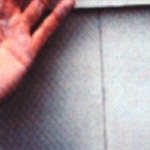
Powdery feel on paint film.
Due To
- Use of low quality paint.
- Use of interior paint for exterior application.
- Adultration of paint.
Recommendation
- Use primer before application of top coats to seal the wall. Therefore more latex will remain on the wall surface
(not being absorbed) to give better binding properties. - Use a quality exterior paint as top coats to help weathering resistance.
Mildew Growth
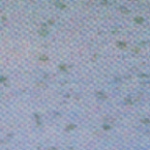
Black, grey or brown spots on the paint surface.
Due To
- Surface dampness, or surface receive little or no direct sunlight.
- Use of lower quality paint.
- Failure to prime wood surface before applying the top coat.
- Painting over substrate where mildew has not been removed.
Recommendation
- Use few drops of household bleach to identify whether the black area is mildew or dirt. If it is mildew it will discolour. Alternatively, use detergent and water to remove the black area. If mildew is present, it will not wash away.
- Remove all mildew with diluted household bleach (1 part bleach, 3 parts water). Leave for 5-10 min to kill all the mildew spores. Scrub and wash away with detergent and clean water. Allow the surface to dry thoroughly before painting. After the surface preparation, paint with good quality top coats.
- Install exhaust fan in high moisture areas to keep good ventilation.
Rust Stain
Due To
- Iron in the substrate has begun to rust causing penetration through to the top coats.
- No metal primer being applied on the steel surface to protect steel from rusting.
Recommendation
- If non galvanized nail/steel need to be used and is exposed to air, it is advisable to countersink the nail heads, spot prime the area and seal it with siliconized acrylic sealant or water based acrylic sealant, followed by top coats.
- To remove any loose and rusty material before priming process.
